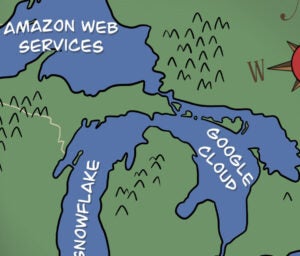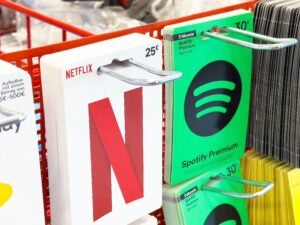 Brian O’Kelley wants you to know he’s serious about mobile.
Brian O’Kelley wants you to know he’s serious about mobile.
On the same day IDC reported Q1 PC sales plummeted 13.9% as consumer usage shifted dramatically to tablet and smartphone devices, the CEO of AppNexus told attendees at the company’s San Francisco summit that the company is going “all in” with its mobile strategy.
O’Kelley and his team described upcoming device and location targeting features, as well as server-side APIs that will let its ad network partners more easily work with app publishers and mobile ad servers.
“The idea is to port our entire platform to mobile,” O’Kelley told AdExchanger. “To have one platform that does display and mobile seamlessly, as opposed to this current divide which is one display ecosystem and one mobile ecosystem.”
But AppNexus faces a credibility gap in this area. It was just three months ago that O’Kelley told PandoDaily, “We’ve been supporting mobile RTB since 2010 but its really not significant. Mobile advertising that’s not search is something like 3 percent of display. It’s tiny.”
Although he then added, “It’s inevitable that at some point we’ll have to focus on it.”
“Some point” came sooner than expected. Yesterday O’Kelley told a roomful of partners, “Mobile is going to pull money away from the display and desktop market we all understand so well.”
Today, AppNexus has 30 people working on mobile and significant supply, with daily mobile impressions close to 2 billion. “We expect this to double in the next couple of months,” said Director of Product Management Arel Lidow.
Adding supply is one thing, but AppNexus must also prove it can optimize mobile RTB to get buy-siders close to the same return on spend that’s possible with mobile exchanges active in the market today.
A tall order, but AppNexus is prepared to make the effort. In addition to adding device targeting options – carrier, OS, lat/long, and other parameters – the company has re-architected its cookie ID to support multiple different identifiers for the same user in desktop, mobile browser, and mobile app environments. These identifiers can theoretically tie back to a unified AppNexus ID – which can then be used to support things like frequency capping and conversion tracking across apps and devices. It’s the same principle touted by multi-device tracking vendors such as Adelphic, Drawbridge, TapAd, and AdTruth – but it comes six months to two years after those offerings came to market.
Five ad network/demand-side partners took part in a one-month alpha program: Collective, Blue Mango, CPX Interactive, FlxOne, and Matomy. The short-term goal is to add 10 sell-side partners (so far unnamed) this quarter and to make the demand-side offering widely available by summer.
As AppNexus pushes forward with its mobile project, it will compete with mobile ad exchanges and SSPs, such as The Rubicon Project, that already have significant mobile scale.
As for the many mobile ad nets and mobile DSPs in market, O’Kelley said, “Mobile DSPs could be competitors, but they may also adopt the platform. I think we’re going to create a whole bunch of new ‘DSPs’ in mobile.”
Several attendees who spoke with AdExchanger said it’s too early to say whether AppNexus’s new push into omni-device RTB will be successful. Two pointed out the company’s ambitions for video RTB have fallen short of expectations, in part because the inventory has been locked up by YouTube and video ad exchanges such as Brightroll and SpotXchange.
Mobile may be more attainable for AppNexus, with inventory broadly dispersed across media sellers and technology challenges that are still largely unsolved.
“We know we don’t have a first mover advantage,” O’Kelley said, adding, “I don’t think there’s any company out there that can say, ‘We’ve nailed it.'”













